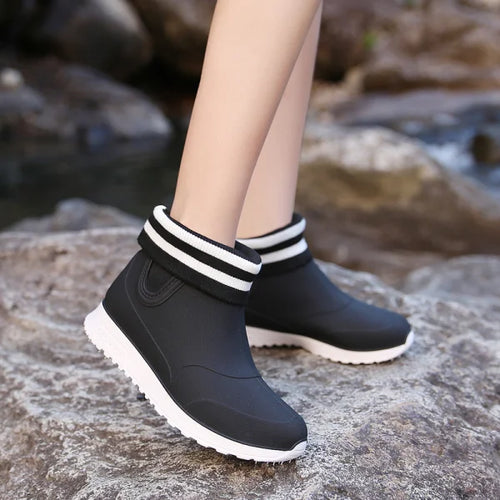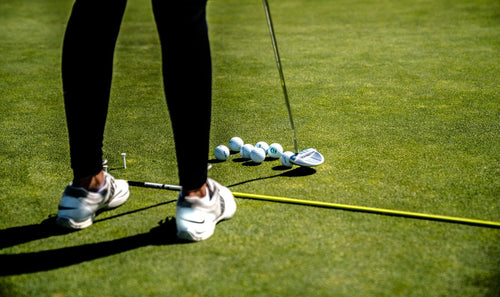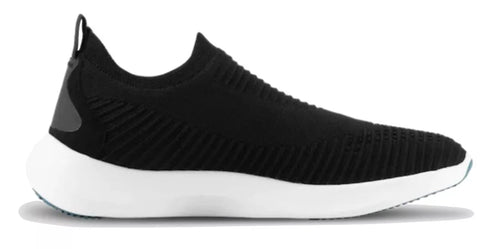Rowing is one of the most, if not the most, exacting sports in terms of its impact on your footwear. As such, you need to go for rowing-optimized waterproof shoes for men.
Your feet are one of the two main contact points for transferring power into your stroke. If you want to maximize your boat speed, finding the perfect rowing-optimized waterproof shoes for men is the first and most crucial step.
These days, crews can bring their rowing shoes inside the boat. But, whereas before, you didn’t have to worry about hunting for the right shoes, now you are faced with the question: what shoes are best for rowing crews?
This article will walk you through a comprehensive buying guide for rowing shoes, as well as provide a list of the top-rated rowing shoes on the market today.
So, lock in your oars and strap in your shoes- it’s going to be a lot to take in.
Also read: 20 Best Golf Waterproof Shoes Of 2021 That Are Perfect For All-Weather
Rowing Shoes Buying Guide
Many small, subtle details work together to concoct the perfect rowing shoes. Since your shoes will largely influence your rowing efficiency and overall performance, it’s important to keep these features at your fingertips.
If you’re used to buying running shoes, or footwear for any activity that requires a lot of walking around, some of these guidelines might surprise you.
Shoe Upper
Most sports wear out your shoes from the bottom because the soles are the target for the majority of the impact. But set aside your instincts for a while and think of the movement of your feet with each stroke.
As you push off, your heel rises while the metatarsal area- the forefoot- remains glued to the footplate. And as your feet bend, so too do your shoes.
In fact, a club rowing shoe will bend upwards of 5,000 times a day.
All that bending will leave a significant amount of impact on the flex point of the shoes. If the material of the upper isn’t strong enough to recover from this constant impact, they will crease, lose their flexibility, and become looser. As you will see later on, a loose rowing shoe is good for nothing.
Without the right upper material, you will have to retire the shoes within a matter of a few weeks.
Material of the Shoe
While we’re on the subject, it’s important to consider the overall materials used in the shoes. While the upper, insole, and outsole of the same shoe feature different materials, they must have some common characteristics.
Namely, the materials need to be waterproof, breathable, flexible, and lightweight.
Now, all of the aforementioned factors depend, at least in part, on the material of the shoe. For example, a tightly packed fabric will not let any built-up moisture diffuse into the air.
Similarly, a stiffer material might feel more secure, but it won’t allow you to flex your feet- the first and most crucial step of your stroke cycle.
Therefore, you need to pay special heed to the material that you choose. Water-resistance is the foremost feature when you’re on the boat. The shoes must repel water instead of soaking it up. Otherwise, the water will weigh down the shoes, cause your feet to slip, and leave you feeling extremely uncomfortable.
However, shoes that are resistant to water are rarely breathable since they’re so tightly packed. As such, you need to strike the perfect balance between water resistance and breathability. Take a gander at the Loom Waterproof Shoes for men to understand how shoes can be waterproof, quick-drying, and breathable at the same time.
Another essential feature is material flexibility. We’ll go more into detail about this as we discuss shoe size and toe box.
Size
For almost every sport, most shoe companies almost always advise you to go a size up. The reason for this is that your feet need some extra space inside the shoe to be able to shift around as you run, jump, leap, and so on.
However, when it comes to rowing, it’s an entirely different story. The perfect rowing shoes will fit you like a glove- snug, contoured, and flexible.
But why the restrive rule, you might be wondering?
Well, it all comes down to energy transfer; the more room you will have in your shoes, the more your feet will have to move around before they can bend. Consequently, you will lose a lot of your initial energy before even reaching the anchor point, leading to a lesser power generation.
Contrastingly, a tightly-fitting shoe will ensure that no energy goes to waste as you propel the boat forward.
Toe Box
The toe box is a little tricky to get right, but it’s imperative that you do so. The correct-sized toe box will lead to greater biomechanical efficiency by accommodating the changing placement of your foot throughout each stroke cycle.
But keep in mind that you don’t necessarily need a larger toe box to achieve this.
Instead, a well-fitted albeit flexible toe box will help you optimize your biomechanical efficiency.
Carbon Fiber Reinforcements
You’ll notice that a lot of professional rowing shoes come with some technological reinforcements such as heel cups and forefoot cradles.
When you’re coming up to the catch, there is always a risk that your heel slips out of your shoe. Heel cups help lock your feet inside the shoe and help you avoid this ill-timed blunder.
Similarly, forefoot cradles provide lateral stability and support throughout each stroke cycle.
Hands down, the best material for these reinforcements is carbon fiber. With as much integrity and strength as steel, carbon fiber is extremely lightweight and durable.
In fact, most rowing shoes are infused with at least some type of carbon fiber compound to reinforce their overall durability.
Cushioning
Unlike their counterparts, rowing shoes don’t require any cushioning. This is because you’re not doing any high-impact movements for which you would require shock absorption.
However, not only is cushioning unnecessary but excessive cushioning also hinders your power efficiency by dissipating a lot of that initial energy that your legs generate.
So, go for flat shoes that either have minimal cushioning with a zero heel-toe drop or ones that have no cushioning at all.
Sole
Rowing shoes often come with thin plastic or non-marking rubber soles. However, modern, high-grade rowing shoes will often boast a lightweight carbon fiber sole.
One common feature across all rowing shoes is that they have noticeably thin soles- like barefoot shoes.
The logic behind this minimalist sole design is the same as that of zero cushioning; you want as little material between the soles of your feet and the footplate to maximize energy transfer.
Additionally, you should look out for shoes with a split-sole design.
As the name suggests, the sole doesn’t extend throughout the bottom of the shoe as it typically does. Instead, it “splits” in the middle- around the foot arch. However, you’ll still have plenty of reinforcement in the areas where it matters, particularly beneath your heel and the balls of your feet.
One of the main benefits of a split-sole design is that it decreases the overall weight of your shoe. Additionally, the sole will fit on the unique contours of your foot arch, allowing for greater flexibility in movement.
Fastening System
Laces are the most common types of fastening systems for casual, professional, and sports footwear. However, rowing shoes are an exception.
Instead of lace-up systems, rowing shoes use removable straps to fortify the most vulnerable areas of your feet. Laces often tend to tighten the shoes around the area above your foot arch- between your toes and ankle. However, this can be both unnecessarily restrictive and not restrictive enough.
On the other hand, straps lock your foot down around the ankle and arch while leaving the flex point free to move.
Also read:
Top 5 Rowing Crew Shoes
Here are our top picks for the best waterproof shoes for men that are perfect for outdoor rowing.
Bont Project B R1 Rowing Shoes
Bont’s PBR1 revolutionary rowing shoes check our boxes for the rowing-ready waterproof shoes for men.

Bont prides itself on introducing the first-ever split-sole design. However, you can still expect a lot of mid-arch support thanks to the supportive carbon sole structure.
Additionally, the PBR1 boasts a carbon fiber forefoot cradle as well as an anatomically correct heel counter. This way, you can ensure your heel doesn’t slip out without subjecting yourself to painful blisters and friction burns.
Shimano KS-R700B Rowing Shoes
Shimano’s premium carbon fiber rowing shoes are perfect for competitive rowing.

The soles mount directly onto the footplate, which is why they have those huge carbon fiber lugs. Additionally, the soles come with adjustable cleats, which can help you adjust your foot stance.
Moreover, Shimano’s foot stretcher binding system optimizes allows for efficient binding and release.
H2Row Classic Rowing Shoes
H2Row’s flagship rowing shoes have stood the test of time ever since their production in 2002. To this day, the H2Row Classics remain the top-most boat-worthy waterproof shoes for men.

With a perfect combination of weight, performance, and durability, the H2Row classics are ideal for grueling practice days.
Altra Vanish-R Running Shoes
If you’re looking for something a little more casual, the Altra Vanish-R waterproof shoes for men can double as the perfect casual rowing shoes. The soles mimic the split-sole design of the Bonts in that they have more reinforcement around the heel and the toes.

Additionally, the shoes are unbelievably lightweight, with minimal cushioning and a breathable mesh upper.
Loom Waterproof Shoes
Loom is the ultimate waterproof sneaker to keep your feet comfy and dry. If you’re looking for something a little more casual, you might want to stay clear of spiked and lugged shoes. Instead, take a gander at the Loom waterproof sneakers.
Conclusion
You want to keep in mind a myriad of features when buying rowing shoes, such as snug fit, breathability, water resistance, and spacious toe box.
The bottom line is that you want to minimize energy loss as it transfers from your legs to your feet and finally to the footplate against which you push off.
As long as you keep this in mind, you should be good to go.
Discover Unmatched Comfort On Water! Try Loom's Waterproof Shoes Perfect for Rowing Crews – Experience the Difference Today




























